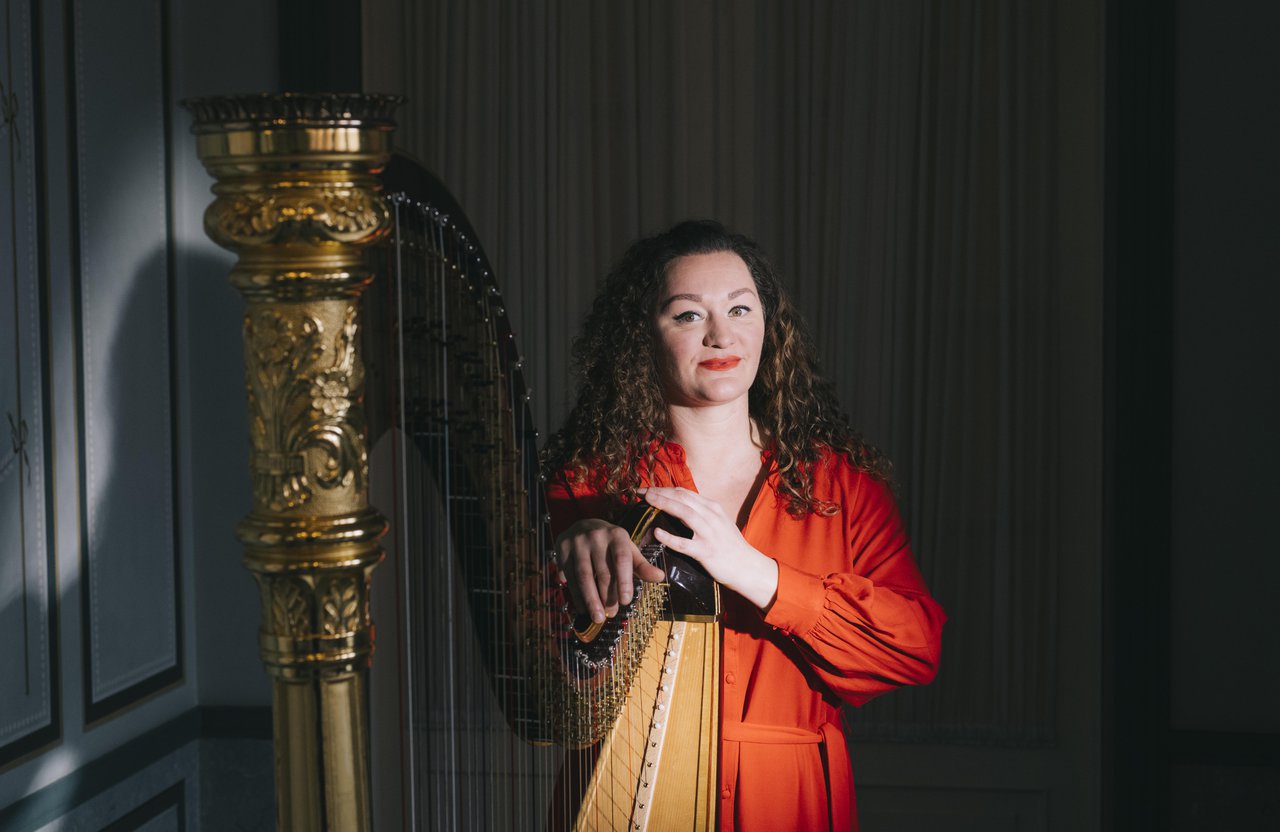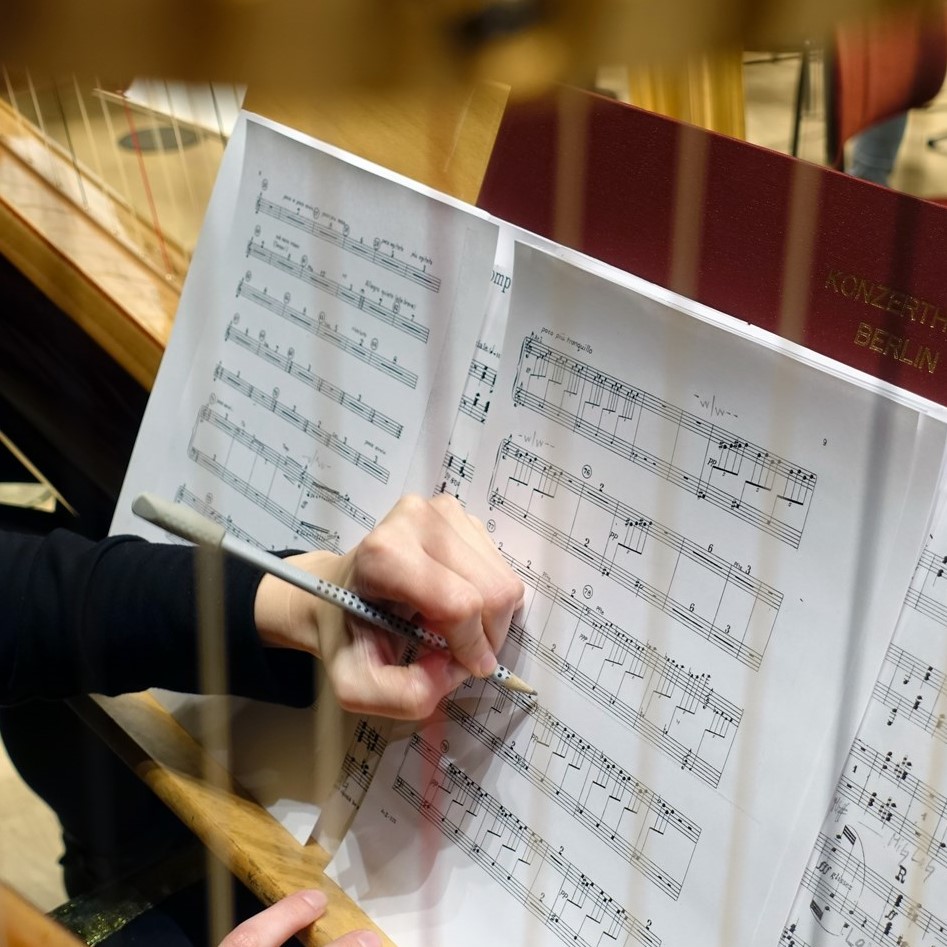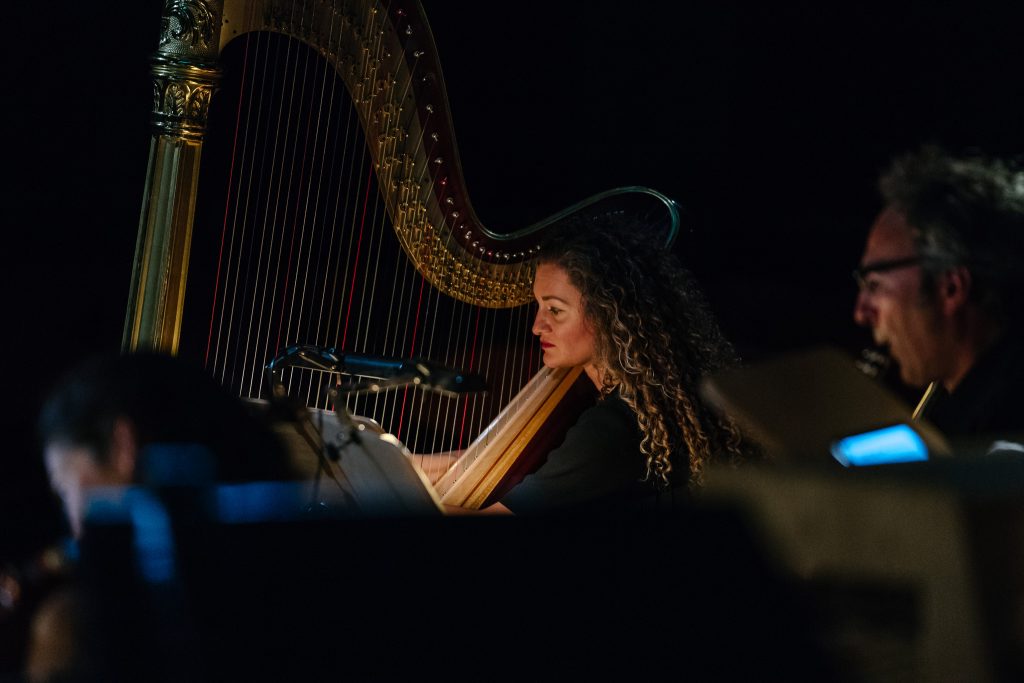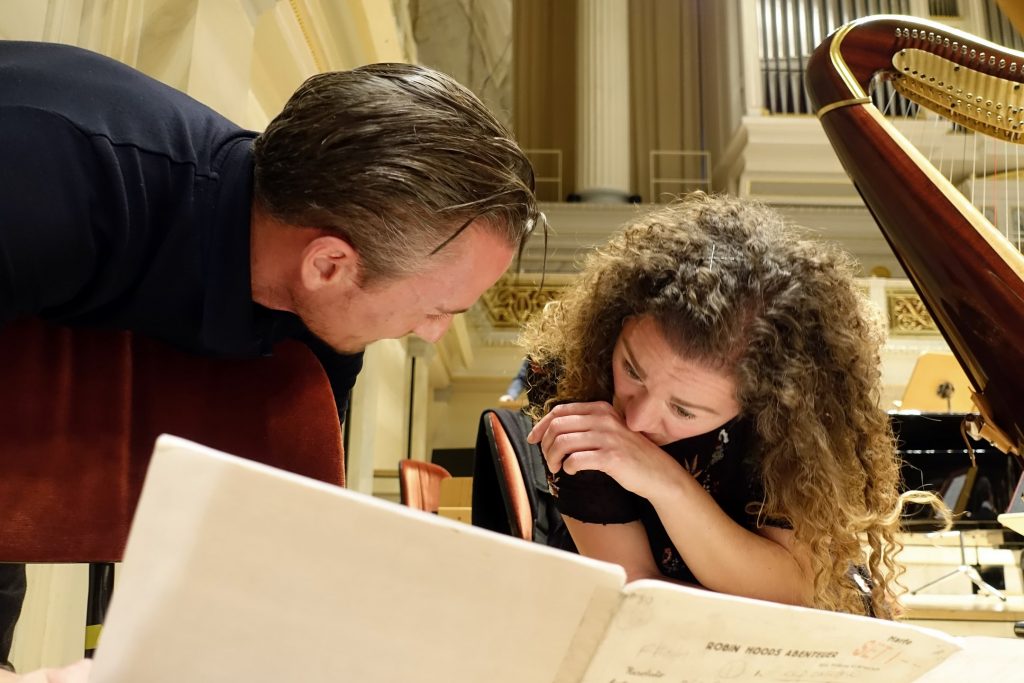16.00 Uhr
Neujahrskonzert
 © Tobias Kruse / OSTKREUZ
© Tobias Kruse / OSTKREUZ
The harp occupies a special position in the orchestra – taking the sole place in its own instrument group. Literally “sole”: it is extremely rare to find more than one harp in an orchestra. On instrumentation lists, the harp can always be found at the very end. But our principal harpist Ronith Mues never feels lonely or left behind. So let’s start our new series “Instrument of the Month” with her and her instrument, for a change.
Ronith learned how to walk using her mother’s harp. “It was easy for me to grab hold of its pillar.” She has been principal harpist in the Konzerthausorchester for nearly 15 years and, as a professor at the Mannheim University of Music and Performing Arts, is passionate about teaching the next generation of harpists.
Above all, of course, the sound, which has something very calming and celestial about it and has accompanied me all my life. And transporting it! When I push my harp case across Gendarmenmarkt, I always attract quite a few glances.

A small selection of the things Ronith transports in her harp case in addition to her instrument.
But I am also excited by the technical challenge. My fingers form the sound directly on the strings, there is no transmitter like the keys of the piano or the bows on the strings. Then you need to operate the seven pedals, each of which has three different positions. For example, when they are all in the middle position, the strings sound like the white keys of a piano. To play semitones, I shorten or lengthen the strings by moving the respective pedal up or down. There is a pedal for each of the red C strings, which is then used to retune the corresponding octave. This hand-foot coordination is extremely important, because if you play perfectly with your fingers but use the wrong pedal, it can be heard right away.
It is definitely peculiar, in both a positive and negative sense. With the harp, you’re more of a loner. You have to count and find your cues alone, always listening very closely to the orchestra. So naturally, this gives me a certain sense of responsibility. I have to make sure that I can follow what is happening. What’s more, there are fewer and fewer orchestral positions for harps.

Counting alone and finding the cues – Ronith’s cues are always solo!
The requirements are increasing all the time because the competition is very tight. However, this also means that the harp is played at a much higher technical level today than in earlier generations. As a backup, many of my students take other subjects on the side. As a professor, I have the task of educating students to ensure they gain a foothold in the market. I have been teaching for a long time and really enjoy it, precisely because the technical level is now so high. In doing so, I can pass on my own experience, as well as a range of tips. The nice thing about it is that I get to accompany an exciting vocational path that is different every time.
For me, chamber music has a very high value; it is a very noble way of making music. My longstanding collaboration with the Horenstein Ensemble was and is enormously important to me. We play as solo instruments, but never alone. This means we can work out a common interpretation, which is often rather difficult in a large orchestra. The harp comes into its own much more in the Horenstein Ensemble – I can show all the facets of my instrument. Often the chamber music works we perform date from the Impressionist period, when many works were composed for harp. I am very grateful to have found colleagues who not only want to play string quartets or piano trios, but also add my dear lonely harp (laughs).

Ronith plays in our Horenstein Ensemble, which consists of string quartet, clarinet, flute (as a guest) and harp.
We played Mahler’s Third Symphony with Iván Fischer a few years ago. It was the only one of his symphonies that I had never played before. When the choir came in during the rehearsal, I realised how beautiful the piece was. I immediately had tears in my eyes. You really remember moments like that for a long time.

Principal harpist and conductor talking during a concert break
I tune my instrument! All 47 strings of the harp need to be retuned before every rehearsal and concert. I do that best alone for 15 minutes before the concert starts – then I have the necessary peace and quiet on stage and can make sure that everything is in order.
Photos: Tobias Kruse / Ostkreuz (cover portrait), Markus Werner (Horenstein, contents harp case), Norbert Möller